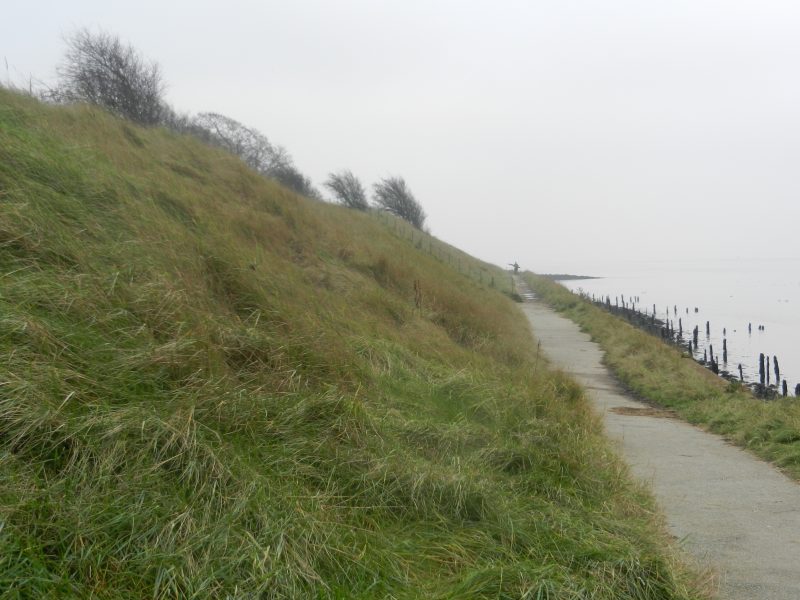The gun battery at Paull (s.p.b.) was apparently rebuilt in 1807 (p.646, s.p.b.s) and dismantled after the Napoleonic Wars in 1820. The bulk of the existing fortress complex was built in the early 1860s with some changes 30 years later. The inside of the complex is not visible from the immediate surrounding area as it is not open to the public and quite overgrown anyway. The buildings include barrack blocks (earlier example at Berwick on Tweed), storage buildings and so on. It is these buildings which are deteriorating and which are highlighted in the Heritage at Risk Register (s.p.b.s).
The surrounding ramparts are much enjoyed by walkers and dog walkers. The site is also home to many shrubs and wild plants that have benefitted from the area being uncultivated and not grazed. There are a couple of benches at the village end of the ramparts and the rough surface carpark affords panoramic views up and down the Humber Estuary for visitors who prefer to stay in their cars. It is also a popular site with sea fishermen. However, rather like the site of dereliction at St. Andrew’s Dock, it is a place with vibrant self-sown flora, and all the better for that.
A circular walk from this carpark alongside the Humber and the inland just before the low light (s.p.b.s) benefits from a relatively new bench sited just at the edge of the area of managed retreat and then taking-in a bench in the churchyard of Paull church. This churchyard, as I will have mentioned before, is a delight in spring with a succession of snowdrops, crocus and primroses.
